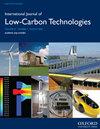不同输入变化下并行支持向量回归和最近邻回归估算中国湿润亚热带地区日全球太阳辐射
IF 2.3
4区 工程技术
Q3 ENERGY & FUELS
引用次数: 0
摘要
间接估计全球太阳辐射是强烈非线性的,需要通过机器学习来解决。顺序开发机器学习模型可能非常耗时。此外,外源气象、地理和时间变量是否以及如何影响回归精度仍未得到很好的理解。本文利用多核中央处理器(CPU)和图形处理器(GPU)上现有的Python库,对并行支持向量回归(SVR)和最近邻回归(NNR)模型估算中国湿润亚热带地区的日全球太阳辐射进行了评估。研究了7种输入变量。文献中通常采用两种变化,四种变化包含有界Pearson相关系数(PCCs)的气象、地理和/或时间特征,其他变化仅包括所有可用的特征。实验结果表明:SVR和NNR对非线性回归同样有效,当绝对PCCs不小于0.3(即所有气象特征)的特征变化时,能够获得最准确的估计;gpu并行支持向量回归模型可加速参数定标和预测;与cpu并行化和gpu并行化的svm模型相比,gpu并行化的NNR模型效率更高,且随数据样本数量的增加具有更强的可扩展性;由于确定距离的方法不同,cpu并行化NNR模型比gpu并行化NNR模型消耗的参数校准时间要少得多,而且gpu并行化NNR模型在交叉验证过程中反复计算所需信息所浪费的时间较多。本文章由计算机程序翻译,如有差异,请以英文原文为准。
Evaluating parallelized support vector regression and nearest neighbor regression with different input variations for estimating daily global solar radiation of the humid subtropical region in China
Indirectly estimating global solar radiation is strongly nonlinear and needs to be addressed by machine learning. Sequentially developing a machine learning model can be very time consuming. Moreover, whether and how the exogenous meteorological, geographical, and temporal variables affect regression accuracy still hasn’t been well understood. This paper evaluates parallelized support vector regression (SVR) and nearest neighbor regression (NNR) models for estimating daily global solar radiation of the humid subtropical region in China using existing Python libraries on a multi-core central processing unit (CPU) and a graphical processing unit (GPU). Seven input variations are studied. Two variations are commonly adopted in literature, four variations contain meteorological, geographical, and/or temporal features with bounded Pearson correlation coefficients (PCCs), and the other variation simply include all the available features. Experimental results demonstrate that: SVR and NNR are equally powerful for nonlinear regression, and the variation comprising features with absolute PCCs no less than 0.3 (i.e. just all the meteorological features) is able to achieve most accurate estimation; the GPU-parallelized SVR model can accelerate parameter calibration and prediction; compared with the CPU-parallelized and GPU-parallelized SVR models, the GPU-parallelized NNR model is much more efficient and rather more scalable with the increment of the number of data samples; and the CPU-parallelized NNR model consumes quite less parameter calibration time than the GPU-parallelized NNR model, owing to different methods adopted for determining distances and significant time wasted by the GPU-parallelized NNR model on repeatedly calculating required information during crossvalidation.
求助全文
通过发布文献求助,成功后即可免费获取论文全文。
去求助
来源期刊

International Journal of Low-carbon Technologies
Engineering-Architecture
CiteScore
4.30
自引率
4.30%
发文量
106
审稿时长
27 weeks
期刊介绍:
The International Journal of Low-Carbon Technologies is a quarterly publication concerned with the challenge of climate change and its effects on the built environment and sustainability. The Journal publishes original, quality research papers on issues of climate change, sustainable development and the built environment related to architecture, building services engineering, civil engineering, building engineering, urban design and other disciplines. It features in-depth articles, technical notes, review papers, book reviews and special issues devoted to international conferences. The journal encourages submissions related to interdisciplinary research in the built environment. The journal is available in paper and electronic formats. All articles are peer-reviewed by leading experts in the field.
 求助内容:
求助内容: 应助结果提醒方式:
应助结果提醒方式:


